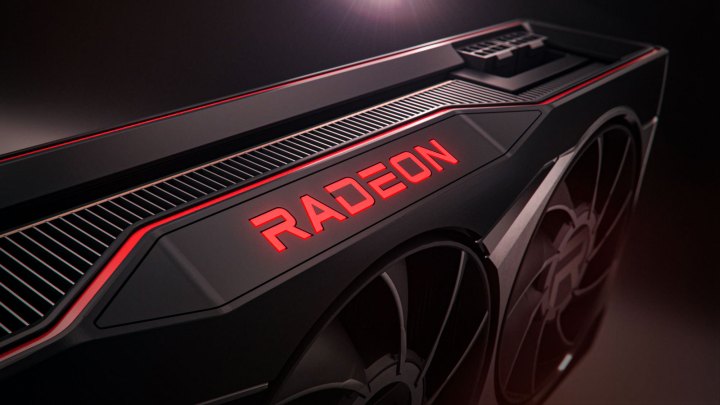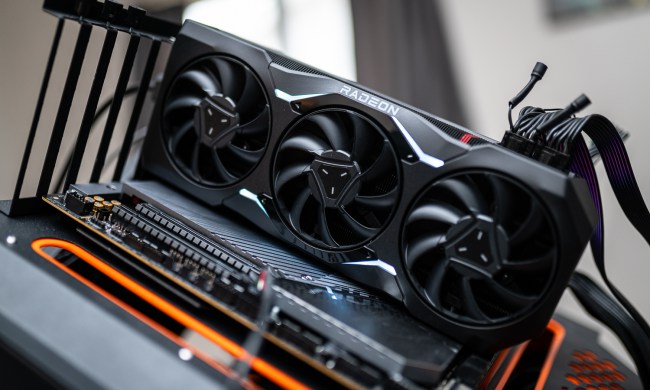Details pertaining to AMD’s upcoming Navi 31 GPUs have emerged, indicating that Team Red is pulling out all the stops for its next-gen graphics cards.
Moore’s Law Is Dead’s latest video examines the latest leaks for both Navi 31 and Navi 32 GPUs, with the former said to be powering AMD’s future flagship boards.

For reference, Navi is the main GPU die that AMD graphics cards are based on. Navi 31 (the most powerful high-end GPUs), Navi 32 (midrange), and Navi 33 (entry-level and midrange) silicon will be the backbone of the RDNA 3 architecture, the follow up to the current-gen RDNA 2.
Moore’s Law Is Dead (MLID), who is well-connected within the hardware space, starts off his presentation by highlighting that AMD is indeed developing Radeon RX 7000 boards with a multi-chip module (MCM). Within AMD, the company refers to 6nm dies as MCD (Memory Complex Dies), while the 5nm dies are known as GCD (Graphics Complex Dies), according to ‘very high confidence’ sources.
To this end, Navi 31 GPUs will reportedly come with 5nm Compute dies, as well as 6nm I/O and Infinity Cache dies.
As explained by NotebookCheck, this means AMD is taking a 3D stacked approach, reminiscent of the recently released Ryzen 7 5800X3D. This particular aspect of a multiple die design has been spotted before, and with MLID stressing that he can “100% confirm 3D stacking from all sources,” it seems AMD is certainly going all out when it comes to its next-gen GPUs.
Ryzen processors disrupted the CPU market with a range of efficient chips thanks to its MCM design — a state of affairs that AMD is evidently looking to replicate in terms of the GPU industry, which Nvidia has been dominating for years. Moore’s Law Is Dead touches on this scenario by saying multiple dies is a “major advantage over Ada Lovelace.”
Moving on, Navi 31 cards (NotebookCheck points out that the flagship Radeon RX 7900XT is probably being discussed) will apparently sport 512MB of infinity cache, joined by up to 32GB of VRAM via a 256-bit bus. A total of three variants from this specific configuration are seemingly in the works.
As for the performance, Moore’s Law Is Dead has heard that Navi 31 will provide a 90% to 130% jump over what the Radeon RX 6900XT offers in rasterization.

Radeon RX 7000 vs. RTX 40
Notably, the “top mainstream” next-gen AMD flagship Navi 31 graphics card will feature a power consumption level between 375 and 450 watts, according to Moore’s Law Is Dead. “This is massively more efficient than what Nvidia is doing with Lovelace,” he stresses.
Comparatively, power consumption rumors surrounding Nvidia’s RTX 40 GPUs have been a cause for concern, with the latest reports suggesting that Team Green boards may require 600 watts, while certain models could even approach the unheard of 1000 watts mark.
It seems that the recent claim that “RDNA 3 will decimate Nvidia in efficiency across the entire lineup” doesn’t seem to be an exaggeration.
Moreover, we’ve already heard that the overall performance upgrade for RDNA 3 could reportedly be larger than Nvidia’s next-gen boards when compared to its predecessors. Still, Team Green isn’t sitting idly by waiting for its main rival to eat away at its market share; it could have a node advantage over AMD, but only time will tell which firm wins the battle of next-gen.
Elsewhere, MLID has heard that Navi 31 will be compatible with PCIe 5.0 x16. In contrast, Nvidia is reported to be sticking with PCIe 4.0 for its own next-gen GPUs.
Finally, Navi 31 cards are expected to launch during the fourth quarter of 2022. The last few months of this year is apparently still the timeline AMD plans to stick to for releasing Radeon RX 7000 cards onto the market, which if true, would follow the rumored September introduction of the Nvidia RTX 40-series.
As for the reason behind AMD opting to not sell its upcoming cards simultaneously alongside Nvidia products, Moore’s Law Is Dead previously emphasized that RDNA 3 is “a more complex design, really a more ambitious design.” A few more months could see AMD taking the “efficiency and performance crown.” Internally, it “knows that this launch needs to be perfect.”

Navi 32 joins the fray
Elsewhere, Navi 32 — the midrange lineup of next-gen AMD video cards — is also reportedly being designed with an MCM approach via the 5nm GCD and 6nm MCD processes. As pointed out by NotebookCheck, the series will be developed with 16GB of VRAM via a 192-bit bus, in addition to 10,000 cores — Navi 31 will purportedly feature up to 15,360 cores (via Wccftech), a threefold increase compared to the 5120 cores count of the RX 6900.
Breaking away from the rollout schedule of RDNA 2, Moore’s Law Is Dead notes that the Navi 32 RDNA 3-based cards GPUs should, according to his most trusted sources, become available during the first half of 2023.
By all accounts, the current plan is to usher in next-gen via entry-level and midrange Navi 33 graphics cards sometime this year, followed by the flagship, high-end Navi 31 boards, with Navi 32 completing the rollout next year.
Moore’s Law Is Dead’s information isn’t just limited to next-gen RDNA 3 GPUs. He even mentioned RDNA 4, which he expects will utilize GDDR7 technology. That revelation isn’t too much of a surprise, but he did say that “a lot is changing” in regard to RDNA 4 due to purported TSMC 3nm issues.
In any case, the well-known insider said RDNA 4, although it won’t represent quite the same performance boost as RDNA 3 versus RDNA 2, will “borrow a lot from the crazier designs like MI300. These are elaborate 3D stacking designs that AMD has been hinting at publicly.”




